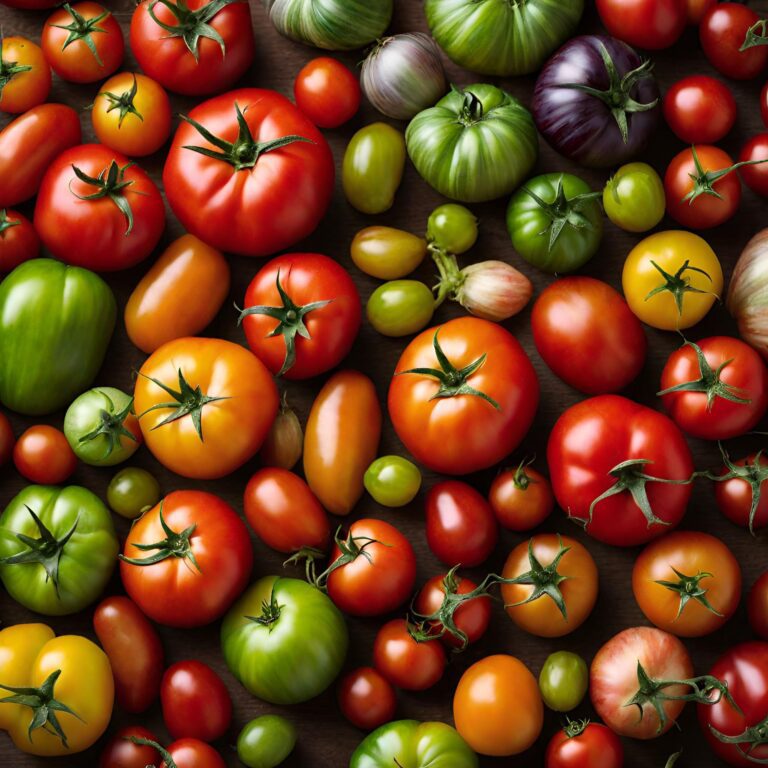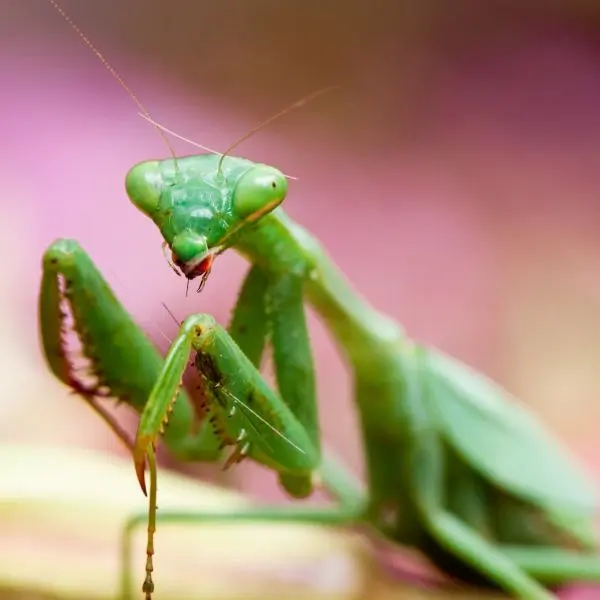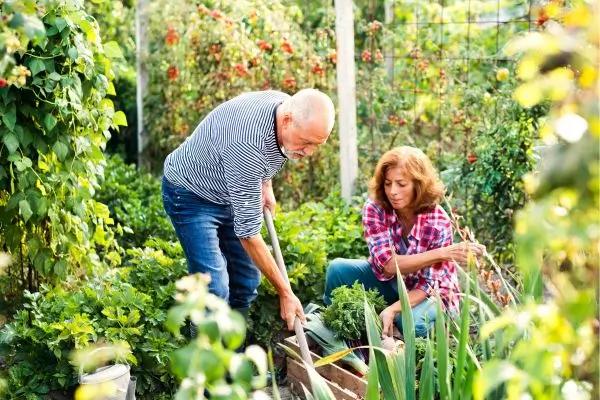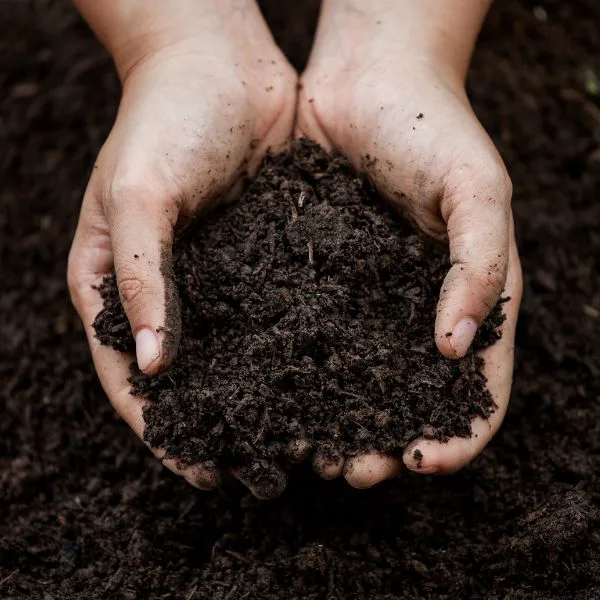Regenerative Gardening: Better Soil Health for Bountiful Harvests
This website contains affiliate links, advertisements, and sponsored content. Please refer to our policies and disclosures page linked at the bottom of this page.
Regenerative Gardening
Regenerative gardening is not the same as “organic gardening.” At least not by the government’s definition of the word. Truly organic farming and gardening is regenerative, as discussed by the folks at the Organic Farming Research Foundation.
There’s a profound shift occurring in the gardening community—a return to the roots, if you will. More and more people are realizing that we have to change how agriculture is done. Conventional farming is destroying our topsoil, polluting our waterways, and poisoning every living thing on the planet – including us!
It’s Not “Trendy”
Regenerative gardening is not the latest popular trend; it’s a paradigm shift towards sustainable, ecologically sound practices that rejuvenate the soil, which is the foundation of our gardens and all life on earth.
In this guide, we’ll look into regenerative gardening principles, explore synthetic inputs’ detrimental effects, and highlight the many benefits of embracing healthy regenerative practices.
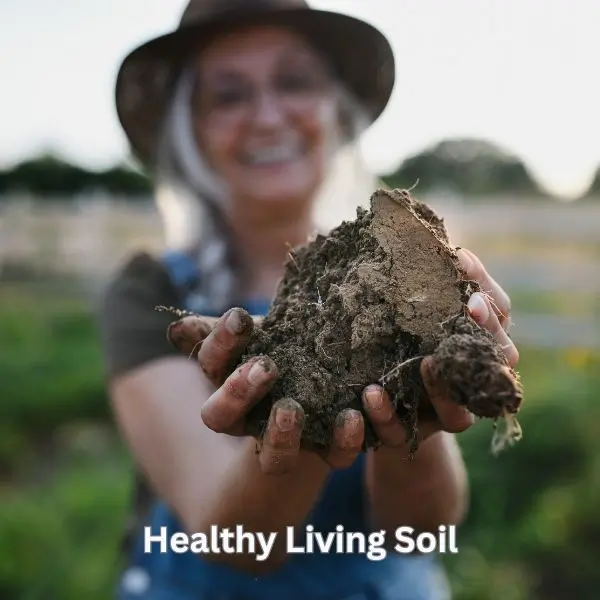
Understanding Regenerative Gardening
Regenerative gardening isn’t just about growing plants; it’s about nurturing our ecosystems.
At its core, it’s a holistic approach that imitates nature’s processes to restore and enhance soil health.
Regenerative gardening creates resilient ecosystems that sustain abundant plant life by building biodiversity, promoting soil carbon sequestration, and minimizing disturbance.
The Damage of Synthetic Inputs
The widespread use of synthetic fertilizers, herbicides, and pesticides has severely damaged our soils.
These chemical inputs disrupt the delicate balance of microbial communities, deplete essential nutrients, and degrade soil structure.
Moreover, they contribute to environmental pollution, jeopardizing the health of ecosystems and human populations alike.
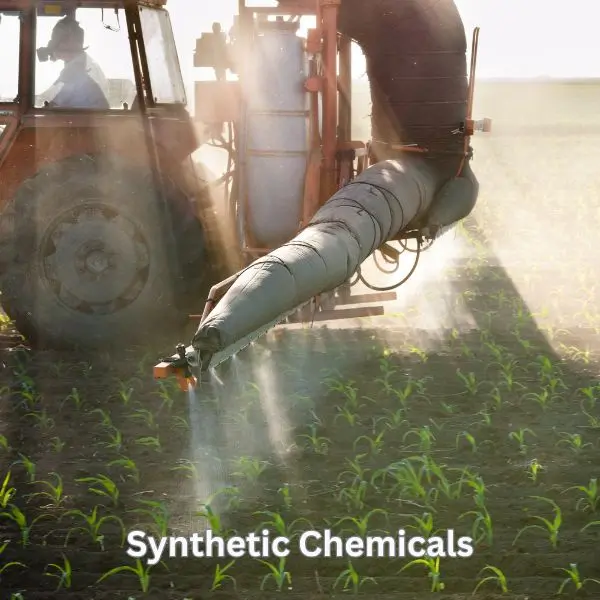
Synthetic Fertilizers: A Double-Edged Sword
While synthetic fertilizers provide a quick fix for some nutrient deficiencies, they come at a high cost to soil health.
Soluble nutrients are easily leached from the soil, leading to nutrient imbalances and pollution of waterways.
Additionally, the overreliance on synthetic fertilizers inhibits the natural processes of nutrient cycling and deprives plants of essential micronutrients.
Herbicides and Pesticides: Unintended Consequences
The indiscriminate use of herbicides and pesticides not only harms target pests but also disrupts beneficial insects, soil microbes, and wildlife.
Furthermore, these chemicals persist in the environment, contaminating soil, water, and air. Sometimes, these chemicals persist in the soil for many generations after they have been discontinued.
Over time, their cumulative effects weaken ecosystems and pose serious risks to biodiversity, not to mention the damaging effects on human health.
Embracing Organic Regenerative Gardening Practices
In contrast to conventional methods, organic regenerative practices prioritize soil health and biodiversity.
By integrating cover cropping, composting, crop rotation, and minimal tillage, gardeners can nourish the soil, enhance its fertility, and mitigate environmental impact.
These practices improve crop yields and quality and build a harmonious relationship between humans and nature.
Plant Diversity
Plant diversity is not just a matter of aesthetics; it is the cornerstone of ecological strength and sustainability.
A wide variety of plant species encourages biodiversity in gardens and natural ecosystems alike, providing habitat for beneficial insects, birds, and other wildlife.
Additionally, diversity contributes to soil health, with different species having unique root structures and nutrient requirements that enhance soil structure and fertility.
Planting a variety of crops reduces the risk of pest and disease outbreaks, minimizes the need for chemical inputs, and promotes natural pest control through predator-prey interactions.
Furthermore, diverse plant communities contribute to climate resilience, with different species exhibiting varying levels of drought tolerance, heat resistance, and carbon sequestration potential.
Embracing plant diversity in our gardens and agricultural landscapes is good stewardship and a strategic investment in the health and vitality of our soil, food systems, and future generations.

Cover Cropping: Nature’s Blanket
Cover cropping is an important part of regenerative gardening, providing many benefits for soil health.
By planting cover crops such as legumes, grasses, and brassicas, gardeners can protect the soil from erosion, suppress weeds, and enhance organic matter content.
Additionally, cover crops can fix atmospheric nitrogen into soil, enriching it with essential nutrients for subsequent plantings.
Soil biology thrives when plants grow in it. If nothing grows there to feed the soil, it will feed on itself, depleting the microorganisms and harming the soil.
Composting: Turning Waste into Gold
Composting is nature’s recycling program, transforming organic waste into nutrient-rich humus.
Gardeners can replenish organic matter, improve soil structure, and enhance microbial activity by composting kitchen scraps, yard waste, and crop residues.
Moreover, compost adds valuable nutrients to the soil, reducing or eliminating the need for synthetic fertilizers and promoting long-term soil fertility.
Crop Rotation: Breaking the Cycle
Crop rotation is a time-honored practice that prevents soil depletion and reduces pest and disease pressure.
By alternating crops with different nutrient needs and growth habits, gardeners can maintain soil balance, suppress soil-borne pathogens, and disrupt pest life cycles.
Additionally, crop rotation promotes biodiversity and resilience, enhancing the ecosystem’s overall health.
Minimal Tillage: Tread Lightly
While traditionally used to prepare soil for planting, tillage disrupts the soil structure, accelerates erosion, and depletes soil organic matter.
In regenerative gardening, minimal tillage or no-till practices are favored to preserve soil integrity and minimize disturbance.
One popular tool in the no-till grower’s community is the broadfork. It allows you to loosen the soil without inverting it and disturbing the soil structure like a tiller or plow does.
By leaving the soil undisturbed, gardeners can promote soil aggregation, retain moisture, and sequester carbon—a win-win for soil health and the environment.

The Benefits of Organic Regenerative Practices
The benefits of embracing organic regenerative practices extend far beyond the garden gate.
By building healthy soil ecosystems, regenerative gardening promotes ecological resilience and safeguards biodiversity.
Moreover, organic regenerative practices support local food systems, enhance food security, and promote community well-being.
By prioritizing soil health and sustainability, gardeners can be stewards of the land, cultivating abundance for generations to come.
Frequently Asked Questions
Q: Can I still use synthetic fertilizers and pesticides in regenerative gardening?
A: Regenerative gardening emphasizes organic practices, and transitioning away from synthetic inputs is encouraged.
Synthetic fertilizers and pesticides disrupt soil health and harm beneficial organisms, undermining the principles of regenerative gardening.
Q: How long does it take to see results from regenerative gardening practices?
A: The timeline for seeing results from regenerative gardening practices varies depending on soil condition, climate, and management practices.
While some benefits, such as improved soil structure and fertility, may be noticeable in a growing season or two, the full effects of regenerative gardening unfold over time, contributing to long-term soil health and resilience.
Q: Can regenerative gardening be practiced in small urban spaces?
A: Absolutely! Regenerative gardening principles can be applied to gardens of all sizes, including small urban spaces.
Container gardening, vertical gardening, and community gardens offer opportunities to nurture soil health, promote biodiversity, and grow nutritious food in urban environments.
Q: How can I learn more about regenerative gardening?
A: There are many resources available for those interested in learning more about regenerative gardening.
I’ve included a list below to help you get started.
Digging Deeper: Further Resources for Regenerative Gardening
For those eager to dive deeper into the world of regenerative gardening, here are some valuable resources to explore:
Books:
“The Living Soil Handbook” Jesse Frost
“Dirt To Soil” by Gabe Brown – excellent book!
“A Soil Owner’s Manual: How to Restore and Maintain Soil Health” by Jon Sitka – one of the first books I bought on the subject. It’s good!
“The Regenerative Grower’s Guide to Garden Amendments” by Nigel Palmer – on my list to read.
“Teaming with Microbes: The Organic Gardener’s Guide to the Soil Food Web” by Jeff Lowenfels and Wayne Lewis – I haven’t read this one yet either, but it has been recommended to me more than once.
“The Unsettling Of America” by Wendell Berry – a history of how we got here, and why modern agriculture is so broken. Very well written. EVERYONE should read this book!!!
I’ll add a “Recommended Books” page soon, with much more good stuff to read!
Online Courses:
The Rodale Institute offers online courses on regenerative organic agriculture, discussing topics such as composting, cover-cropping, and soil health. They have free downloadable resources, online webinars, consulting services, and even a free course for children! Their blog also has a lot of great information.
The Permaculture Research Institute offers courses on permaculture design principles, which align closely with regenerative gardening practices.
Workshops and Events:
Check with local botanical gardens, agricultural extension offices, and organic farming associations for workshops and events focused on regenerative gardening.
Many universities and research institutions host conferences and seminars on sustainable agriculture and soil health, featuring experts in the field.
Gardening Forums and Communities:
Join online gardening forums such as GardenWeb, Houzz, or Reddit’s gardening community to connect with like-minded gardeners and share experiences and tips on regenerative gardening.
Local gardening clubs and community gardens offer opportunities to learn from experienced gardeners and participate in hands-on projects focused on soil health and sustainability. Check with your local Master Gardeners association.
Websites/Blogs/Podcasts:
The Soil Health Institute website provides resources and research on soil health management practices, including regenerative gardening.
Tune into podcasts like “The Regenerative Agriculture Podcast” hosted by John Kempf for in-depth interviews with experts in regenerative agriculture and soil health.
Explore blogs and websites dedicated to organic gardening, permaculture, and regenerative agriculture for articles, tutorials, and success stories from fellow gardeners and farmers.
Youtube Videos
There are SO MANY!!! But here are a couple of good ones to get you started.
No-Till Growers has a great channel with lots of good information. You may find this video in particular informative: Regenerative Agriculture on a Small Scale
This video from Seven Sons Farms discusses applying regenerative farming practices to a small-scale grower/gardener.
Documentaries
If you’ve never seen the Back To Eden documentary, it’s worth watching. When we first moved here, we began transforming our hard, dead clay soil using woodchips, as described in the video.
Documentaries such as “Kiss the Ground” and “The Biggest Little Farm” offer inspiring stories of farmers and gardeners practicing regenerative agriculture and transforming landscapes through holistic land management.
Conclusion
Regenerative gardening is not just a cultivation method; it’s a philosophy—a way of living in harmony with nature, nurturing the soil, and reaping the rewards of abundance.
By adopting organic regenerative practices, gardeners can restore degraded landscapes and create thriving ecosystems teeming with life.
Let’s sow the seeds of regeneration and cultivate a future where gardens flourish, communities thrive, and the earth thrives. We are all called to be good stewards of the land.
I hope you find these resources helpful. I’ll write more in-depth on the topics mentioned, so please return for more!
Happy gardening!
Doc
